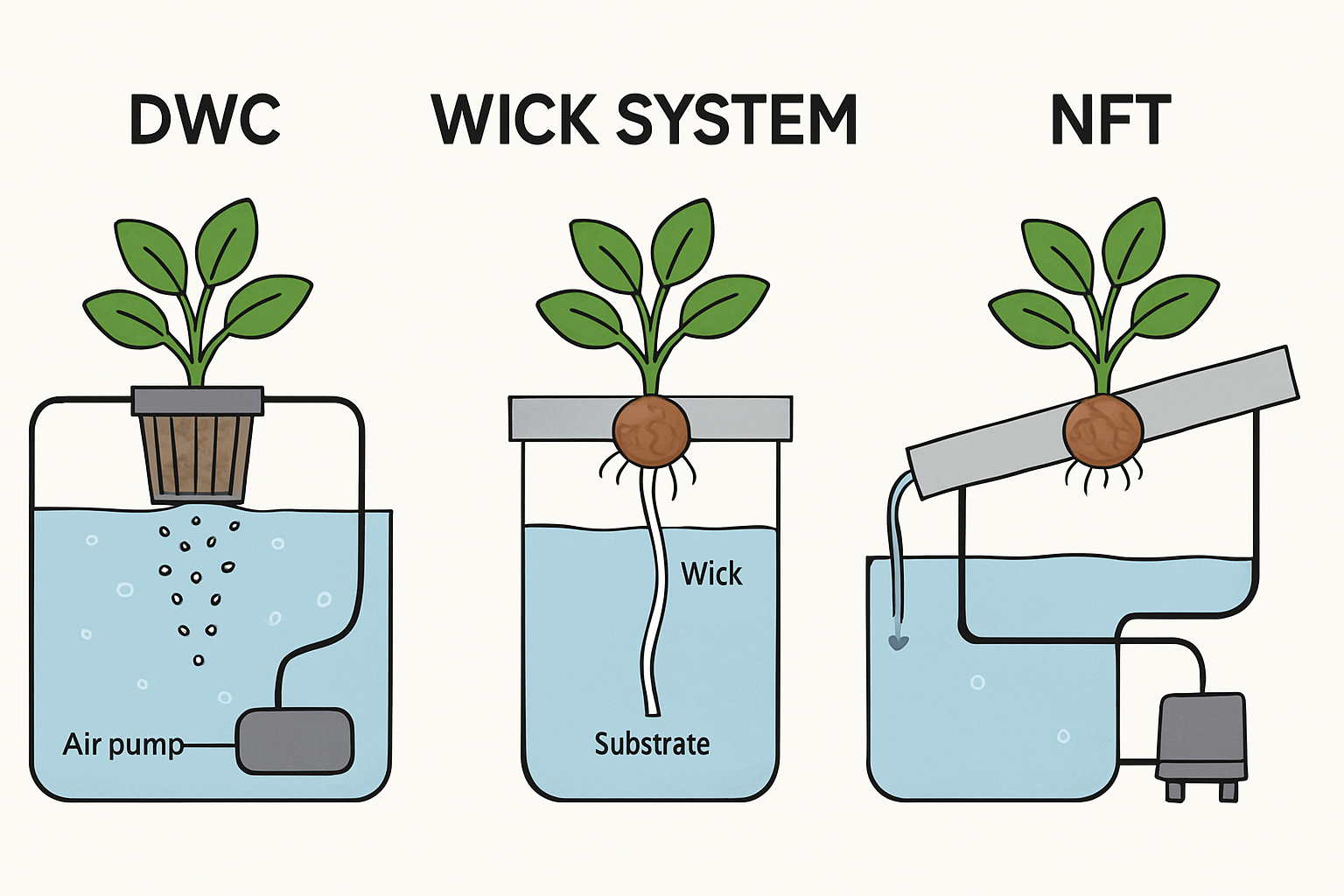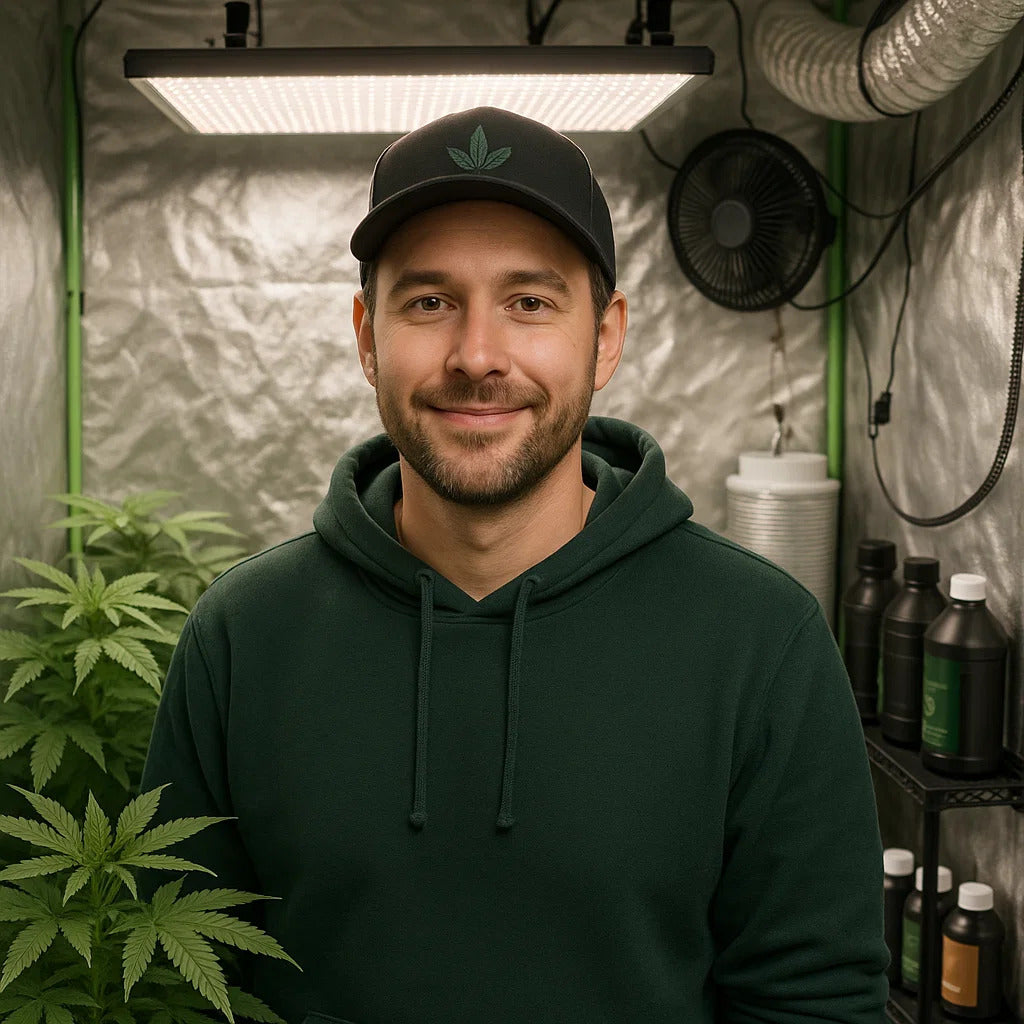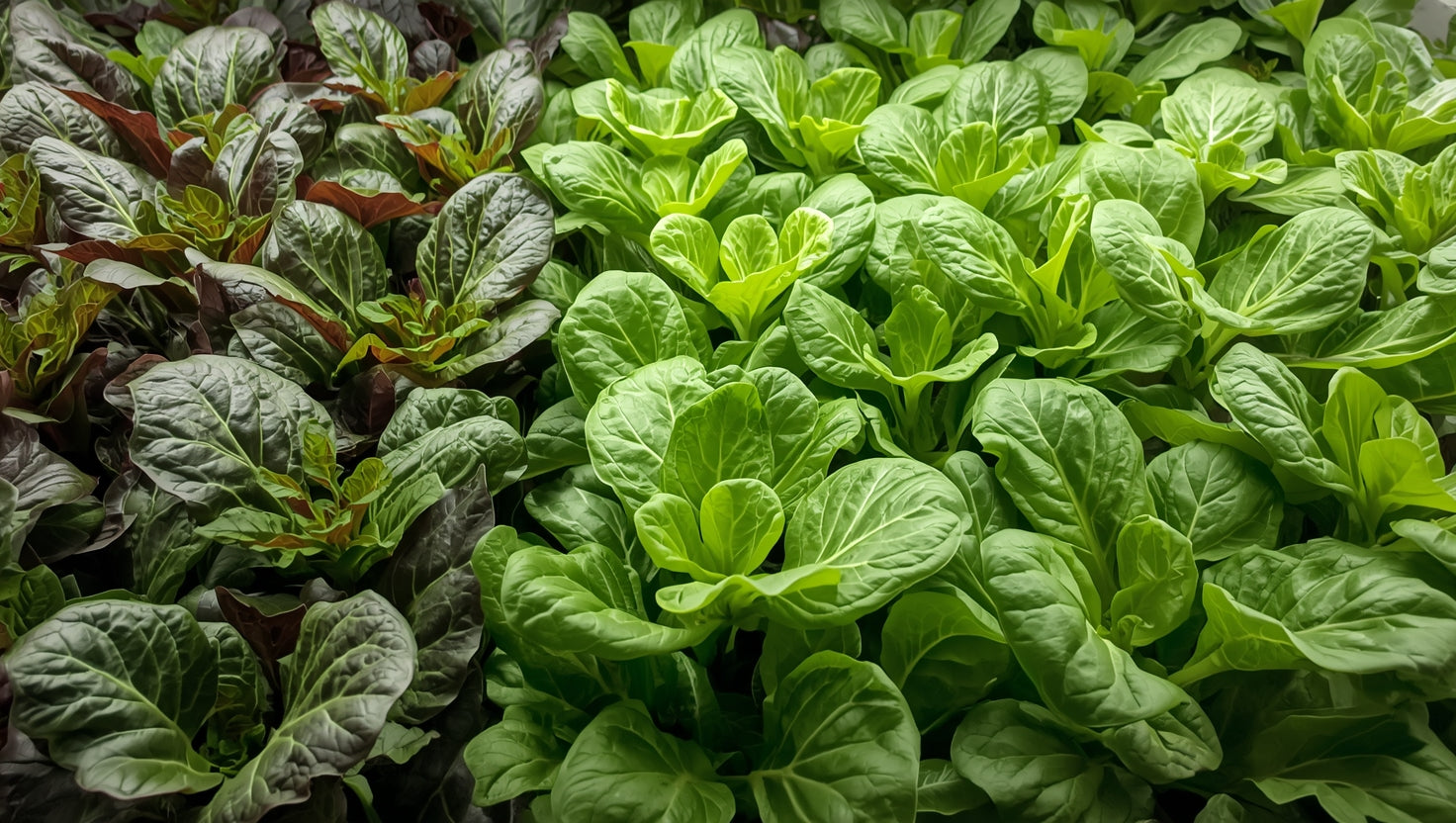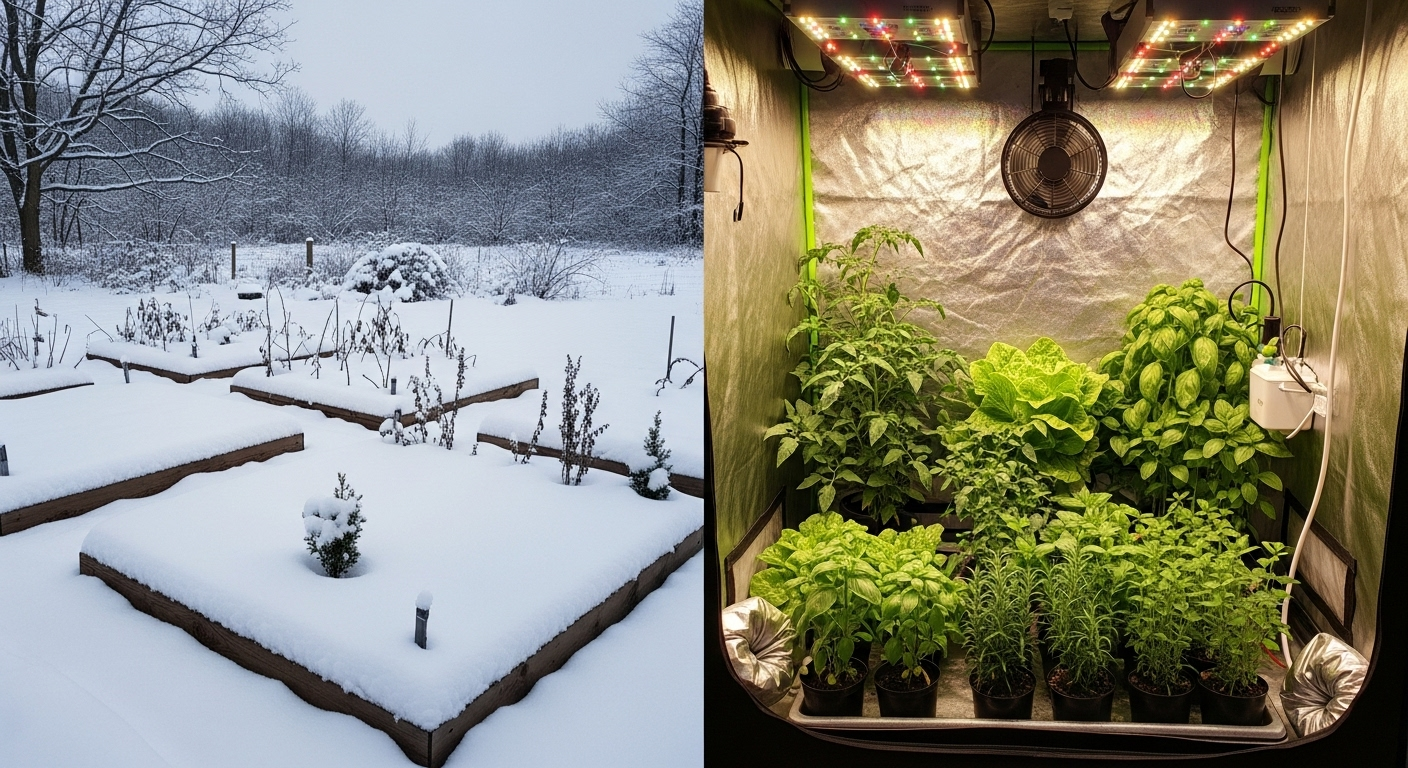
Hydroponic Gardening: A Beginner's Guide to Soil-Free Growing Success
Hydroponic gardening—growing plants without soil—has revolutionized how we think about cultivation. This modern growing method delivers faster growth rates, higher yields, and year-round harvests while using up to 90% less water than traditional gardening. If you've been curious about starting your own hydroponic garden, this comprehensive beginner's guide will walk you through everything you need to know to grow successfully without soil.
What Is Hydroponic Gardening?
At its core, hydroponic gardening is a method of growing plants using mineral nutrient solutions in a water solvent rather than soil. Plants receive precisely what they need, when they need it, creating optimal growing conditions that can accelerate growth by up to 25% compared to conventional methods.
How Hydroponics Works
In hydroponic systems, plants grow with their roots suspended directly in nutrient-rich water or in an inert growing medium such as:
- Coco coir
- Clay pellets (LECA)
- Rockwool
- Perlite
- Vermiculite
The absence of soil eliminates many traditional garden pests and diseases while giving you complete control over your plants' nutrition. This precision allows plants to direct their energy toward growth rather than expanding root systems in search of nutrients.

Benefits of Hydroponic Gardening for Beginners
Hydroponic gardening offers numerous advantages that make it particularly appealing for newcomers:
- Space efficiency: Grow more plants in less space with vertical systems
- Water conservation: Uses up to 90% less water than soil gardening
- Faster growth: Plants typically grow 30-50% faster than in soil
- Year-round growing: Independent of outdoor seasons and weather
- Reduced pest problems: Fewer issues with soil-borne diseases and pests
- Precision control: Manage exactly what nutrients your plants receive
- Less physical labor: No digging, tilling, or weeding required
For urban dwellers or those with limited outdoor space, a Gorilla Grow Tent provides the perfect controlled environment for your first hydroponic setup, allowing you to grow anywhere, anytime.
Choosing Your First Hydroponic System
Several hydroponic systems are well-suited for beginners. Each has its advantages and ideal use cases.
Deep Water Culture (DWC)
DWC is the simplest hydroponic system to build and maintain:
- Plants grow in net pots with their roots suspended directly in nutrient solution
- An air pump and air stone provide oxygen to the roots
- Minimal moving parts mean fewer potential failure points
- Perfect for lettuce, herbs, and leafy greens
- Inexpensive to set up with readily available components
Why it's great for beginners: DWC requires minimal equipment and setup, with components available at most hardware stores. The system is easy to understand and maintain.
Wick System
The wick system is the most basic passive hydroponic method:
- Uses wicks to draw nutrient solution up to the growing medium and roots
- No moving parts or electricity required
- Great for small herbs and microgreens
- Limited capacity for larger or fruiting plants
Why it's great for beginners: With no pumps or electricity required, this is the simplest possible hydroponic system to build. It's ideal for small plants and learning basic hydroponic principles.
Nutrient Film Technique (NFT)
NFT systems are slightly more advanced but still accessible for beginners:
- Shallow stream of nutrient solution constantly flows over plant roots
- Plants sit in channels with roots partially submerged
- Excellent for leafy greens and herbs
- Requires a pump and proper channel slope
Why it's great for beginners: While requiring more components than DWC, NFT systems remain relatively simple while teaching important concepts about nutrient flow and system design.

Essential Equipment for Your First Hydroponic Garden
Starting with the right equipment ensures a smooth introduction to hydroponic gardening.
Basic Components Every System Needs
Regardless of which system type you choose, these essential components form the foundation of any hydroponic setup:
- Reservoir: Food-grade plastic container to hold nutrient solution
- Growing medium: Inert material that supports plants (like clay pellets or rockwool)
- Nutrient solution: Pre-mixed hydroponic nutrients specifically formulated for the plants you're growing
- pH testing kit: Essential for monitoring nutrient solution acidity
- EC/TDS meter: Measures the strength of your nutrient solution
Environment Control Essentials
Creating the proper growing environment is crucial for success:
- Grow tent or enclosed space: A Gorilla Grow Tent Shorty provides the perfect controlled environment for beginners with limited space
- Lighting: LED grow lights are energy-efficient and run cooler than older lighting technologies
- Ventilation: Small fans ensure proper air circulation
- Temperature/humidity monitor: Helps maintain optimal growing conditions
Optional Equipment for Better Results
As you gain confidence, consider adding:
- Timers: Automate lighting and feeding cycles
- Water pump: Required for most systems beyond DWC
- Air pump and air stones: Essential for DWC, beneficial for most systems
- Backup power supply: Protects plants during outages
Setting Up Your First Hydroponic System
Follow these steps to set up a basic Deep Water Culture (DWC) system, ideal for beginners:
Step 1: Gather Your Materials
- 10-20 gallon opaque plastic container with lid
- 3-4 inch net pots (number depends on container size)
- Clay pellets or other growing medium
- Air pump with air stone and tubing
- Hydroponic nutrients (choose a balanced formula for beginners)
- pH testing kit and pH up/down solutions
- Seeds or starter plants
Step 2: Prepare Your Container
- Drill holes in the container lid sized to hold your net pots
- Space holes appropriately for your chosen plants (leafy greens need 6-8 inches, larger plants need more)
- Create a small hole for air tubing
- Consider painting the exterior of clear containers black or using black tape to prevent algae growth
Step 3: Set Up the Aeration System
- Place the air stone at the bottom of your reservoir
- Connect tubing to the air pump and run through the hole in your lid
- Position the pump above the water level to prevent backflow if power fails
Step 4: Prepare Nutrient Solution
- Fill the reservoir with water, leaving 1-inch space at top
- Add nutrients according to manufacturer instructions (typically start at 50% strength for seedlings)
- Adjust pH to appropriate levels (typically 5.5-6.5 for most plants)
- Allow the system to run for a few hours before adding plants
Step 5: Add Plants
- Rinse growing medium thoroughly
- Fill net pots halfway with growing medium
- Add seedlings or rooted cuttings
- Fill around plants with additional medium to provide support
- Place pots in the prepared holes
Maintaining proper water levels is crucial—ensure roots reach the nutrient solution but plant bases remain above water to prevent rot.
Maintaining Your Hydroponic Garden
Successful hydroponic gardening requires regular but simple maintenance routines.
Daily Maintenance
- Check water levels and top off as needed
- Observe plants for any signs of stress or deficiency
- Ensure air stones and pumps are functioning properly
Weekly Maintenance
- Test and adjust pH levels (typically 5.5-6.5 depending on plants)
- Check nutrient concentration (EC/TDS)
- Prune plants as needed
- Inspect for any pest issues
Monthly Maintenance
- Complete nutrient solution change
- Clean any salt buildup on equipment
- Sanitize system parts if needed
- Check and clean air stones
Nutrient Management Basics
Understanding basic nutrient management is crucial for hydroponic success.
Essential Nutrients for Plants
Plants require:
- Macronutrients: Nitrogen (N), Phosphorus (P), Potassium (K), Calcium (Ca), Magnesium (Mg), Sulfur (S)
- Micronutrients: Iron (Fe), Manganese (Mn), Zinc (Zn), Boron (B), Copper (Cu), Molybdenum (Mo)
For beginners, a quality pre-mixed hydroponic nutrient solution provides everything your plants need in the correct ratios.
Understanding EC and pH
- EC (Electrical Conductivity): Measures the nutrient concentration in your solution. Start low (0.8-1.2 for seedlings) and increase as plants mature (1.2-2.0 for vegetative growth, 2.0-3.0 for fruiting plants).
- pH: Controls nutrient availability. Most hydroponic plants prefer slightly acidic conditions between 5.5-6.5. pH that's too high or low can lock out nutrients even if they're present in the solution.
For more detailed information on optimizing nutrients in controlled environments, check out our blog on hydroponic nutrient management.
Best Plants for Beginner Hydroponic Gardeners
Some plants naturally thrive in hydroponic systems and are more forgiving for beginners.
Leafy Greens
- Lettuce: Fast-growing and ready to harvest in 30-45 days
- Spinach: Nutrient-dense and highly productive
- Kale: Resilient and offers multiple harvests
Herbs
- Basil: Grows vigorously in hydroponics with intense flavor
- Mint: Adapts well to water-based systems
- Cilantro: Fresh supply for cooking without bolting as quickly as in soil
Starter Fruiting Plants
- Cherry Tomatoes: Compact varieties like 'Tiny Tim' or 'Red Robin'
- Strawberries: Day-neutral varieties produce year-round
- Hot Peppers: Compact varieties like jalapeño or Thai chili
For beginners, we recommend starting with lettuce or herbs, then progressing to more demanding plants as you gain experience.
Common Challenges and Solutions
Even with the best setup, you may encounter these common issues:
Nutrient Deficiencies
- Yellowing leaves: Often indicates nitrogen deficiency
- Purple stems: Phosphorus deficiency
- Brown leaf edges: Potassium deficiency
Solution: Check and adjust nutrient solution concentration and pH levels. Replace nutrient solution if in doubt.
Algae Growth
- Green water or slime in reservoir
- Compete with plants for nutrients
- Can clog systems and harbor pests
Solution: Use opaque containers, cover all water surfaces from light, and keep your growing environment clean.
Root Rot
- Brown, slimy roots with unpleasant odor
- Caused by insufficient oxygen or pathogens
Solution: Increase aeration, add beneficial bacteria supplements, and maintain appropriate water temperatures (65-70°F/18-21°C).
Using a Gorilla Grow Tent helps mitigate many common problems by providing a controlled, clean environment specifically designed for optimal plant growth.
FAQ: Hydroponic Gardening for Beginners
Is hydroponic gardening expensive to start?
While commercial hydroponic systems can be costly, beginner setups are surprisingly affordable. A basic Deep Water Culture (DWC) system can be built for under $100 using readily available components from hardware stores. The primary ongoing costs are electricity for pumps and lights, plus nutrients. Many beginners start with a simple system and reinvest harvest savings into expanding their setup as they gain experience.
Do hydroponic plants need special lighting?
Yes, unless your setup receives adequate natural sunlight (6+ hours daily), you'll need grow lights. For beginners, LED grow lights are recommended for their energy efficiency, low heat output, and appropriate spectrum coverage. For leafy greens and herbs, you'll need approximately 25-50 watts of actual LED power per square foot of growing area. Fruiting plants like tomatoes and peppers require more intense lighting (40-65 watts per square foot).
How often should I change the nutrient solution?
For most beginner systems, completely replacing the nutrient solution every 2-3 weeks is recommended. However, you should top off with plain pH-adjusted water between changes as plants consume water, and monitor EC/TDS levels weekly. Some fast-growing plants or densely planted systems may require more frequent changes. Always completely replace the solution if you notice unpleasant odors, slime, or significant algae growth.
Can I use regular fertilizer for hydroponics?
No, standard garden fertilizers aren't suitable for hydroponics. They often lack the complete micronutrient profile needed for soilless growing and may contain insoluble components that can clog systems. Always use nutrients specifically formulated for hydroponic growing, which provide the complete balance of immediately available minerals in the correct ratios and don't leave problematic residues in your system.
What are the most common mistakes beginners make with hydroponics?
The most common beginner mistakes include neglecting pH monitoring, starting with overly strong nutrient solutions, insufficient aeration, choosing complex systems before mastering basics, and improper temperature management. Start simple with hardy plants, monitor pH and EC regularly, ensure adequate oxygenation, and maintain appropriate temperatures (65-75°F/18-24°C) for most plants. Begin with half-strength nutrients for young plants and increase gradually as they mature.
Featured Snippet Summary
Hydroponic gardening is a soil-free growing method where plants receive nutrients directly from water. Beginners should start with simple systems like Deep Water Culture (DWC) or Wick systems growing easy plants such as lettuce, herbs, or spinach. Essential equipment includes containers, growing medium, nutrients, pH testing kit, and adequate lighting. Most hydroponic plants thrive with pH between 5.5-6.5 and regular solution changes every 2-3 weeks.
Start Your Hydroponic Journey Today
Embarking on your hydroponic gardening adventure opens up a world of year-round growing possibilities regardless of your space limitations or outdoor conditions. With the fundamentals covered in this guide and quality equipment from Gorilla Grow Tent, you're well-equipped to begin your soil-free growing journey.
Ready to get started? Our Complete Grow Tent Packages provide everything you need for a successful hydroponic setup in one convenient kit. Visit our website today to explore our full range of growing equipment designed specifically for beginners and experts alike.
Remember, the key to hydroponic success lies in starting simple, monitoring regularly, and enjoying the learning process. Happy growing!

Lena Myles
I'm a mushroom enthusiast and home cook based in Oregon. I'm passionate about foraging and creating fungi-focused recipes, especially delicious, plant-based dishes using gourmet mushrooms like trumpet, shiitake, and oyster. When I’m not in the kitchen, you’ll usually find me wandering the woods in search of new wild flavors.


